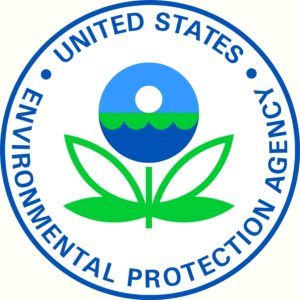By Rick Kingston, President, Regulatory and Scientific Affairs
 It has been a number of years since there has been any change to the EPA’s adverse event reporting systems. The last major change came in with passage of the 6(a)(2) provision in 1997, which set forth requirements for reporting of adverse events involving EPA registered products. EPA subsequently put out PR Notice 98-3 outlining the data collection and reporting requirements. EPA and Industry initiated a work group that ultimately designed reporting forms that manufacturers could use to meet the requirements.
It has been a number of years since there has been any change to the EPA’s adverse event reporting systems. The last major change came in with passage of the 6(a)(2) provision in 1997, which set forth requirements for reporting of adverse events involving EPA registered products. EPA subsequently put out PR Notice 98-3 outlining the data collection and reporting requirements. EPA and Industry initiated a work group that ultimately designed reporting forms that manufacturers could use to meet the requirements.
At the time it was a big change in how the Agency determined what incidents were reportable and how they would be reported. Prior to that time, only events deemed causally related to an exposure involving a pesticide as determined by the manufacturer were required to be reported. There were also provisions whereby a series of events might also need to be reported, even if they were not deemed related to the pesticide exposure. The number of reported incidents was extremely low, which prompted the Agency to overhaul the system and require that all suspected or alleged incidents involving a pesticide had to be included in the manufacturer’s adverse event data system, independent of whether the manufacturer believed there was any causal relationship between product exposure and adverse effects. Incidents would then be categorized according to severity, and those more serious events involving humans, and a few other types of events, would be reported as an individual report. All other events, including all minor severity human incidents and domestic animal events, independent of severity, would be reported in aggregate with simple counts of the number of reported outcomes tabulated by EPA registration number or active ingredient.
For the most part, there has been little change in the system in the last 19 years, although there have been isolated instances of data call-in and enhanced reporting of adverse events by the Agency. What has become evident over time is that although the system established required reporting, the system has not necessarily met the intent of establishing a robust adverse event surveillance system that allowed real-time signal detection and safety profiling capabilities that are common to other such safety surveillance systems. There have been concerns related to data consistency and quality, lack of common terminology used in categorization of incident details, lack of methods to allow separation of low quality reports from higher quality reports, and inability to access the data in an electronic format for statistical analysis.
This is about to change.
In 2009, there was an issue identified by US EPA and Health Canada related to adverse events involving topical spot-on pesticides for pets. This resulted in conditional registrations for these products, with a requirement for manufacturers to collect and report additional data not previously required as part of 6(a)(2). Unfortunately, many of the limitations associated with the existing 6(a)(2) adverse reporting system carried over to this reporting program. And, although some manufacturers have provided state of the art, detailed and analyzed incident data to support the safety profile of their products that has not been the case across the board.
Like other Federal agencies that have been examining their adverse event reporting systems, EPA has determined that it’s time to review their systems and look at improvements in a number of areas. It was likely inspired by a recent Office of the Inspector General report that was highly critical of the National Highway Traffic Safety Administration (NHTSA) handling of product defect complaints including the GM ignition switch failure and a subsequent report in the New York Times that chronicled the failed safety issue reporting system within NHTSA. In that fiasco, it was determined that the GM ignition switch defect had gone undetected by NHTSA for over a decade, despite NHTSA having mandatory reporting requirements for manufacturers to report product defects that have resulted in injuries or death. NHTSA also had a reporting system in place to capture and analyze reports directly from consumers that should have picked up the issue yet failed to do so. EPA staffers have suggested to me that this was a wakeup call for them, and likely other Agencies, that have responsibility to monitor the safety of products within their jurisdiction.
As for EPA efforts to shore up their adverse event surveillance systems, their first step has been to revamp their enhanced reporting program for some conditionally registered pet products and launch a voluntary pilot for manufacturers to participate. This includes establishing a more defined data collection system with codified data fields collected in a standardized format. Data elements, such as clinical effects, will be subject to standardized medical dictionary terminology and other required data collection fields will have specific criteria for inclusion. Although this will only apply to these specific products, it’s somewhat ironic that adverse event data for these pet products will be far more detailed in content and scope than any data for human adverse events reported under existing 6(a)(2) rules and regulations.
There is also an initiative by the EPA Office of Pesticide Programs to revamp adverse event data collection for events reported directly to the Agency by other entities such as health care professionals, public health officials, professionals in the field, and even consumers. The Agency put together a work group of interested stakeholders to participate in identifying important types of data to collect from those entities wishing to report adverse events involving EPA regulated products.
This sounds pretty straight forward, but simply collecting spontaneously reported adverse event data, which is largely reported by consumers, and taken at face value without any confirmation or expert interpretation, may raise more questions than it answers. And, conducting statistical analysis on all of those events without separating out higher and lower quality events may insert considerable bias in the analysis. We haven’t even touched on the need to benchmark differing adverse event systems within various companies so that meaningful comparisons between active ingredients and different companies can be assessed.
Despite potential limitations, it is certainly reasonable to start with a better and standardized set of data elements. It is also understandable that EPA wants additional data to defend its decisions regarding the safety and/or toxicity of active ingredients or products that are in the market. But, in the end, the biggest challenge will be to apply appropriate signal detection methodologies to sort out what the data is actually telling us regarding the safety of these products, and whether or not mitigation efforts are warranted or necessary.
Regardless of how this pilot turns out, it will likely impact the future direction of all adverse event data collected and used by the EPA including 6(a)(2) data, and maybe adverse event data collected by other Agencies including state pest management regulatory reporting programs. It will also be a wake-up call for manufacturers to review their own adverse event and safety surveillance systems to determine how they will be impacted going forward.


